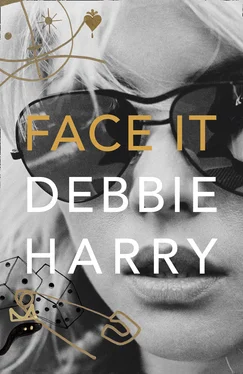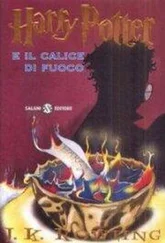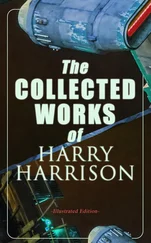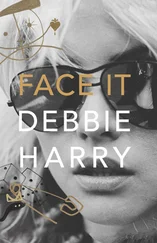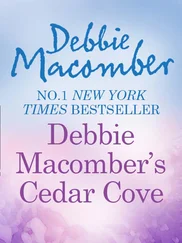I had come to the city to be an artist, but I wasn’t painting much, if at all. In many ways I was really still a tourist, just experiencing the place, having adventures, and meeting people. I experimented with everything imaginable, attempting to figure out who I was as an artist—or if I even was one. I sought out everything New York had to offer, everything underground and forbidden and everything aboveground, and threw myself into it. I wasn’t always smart about it, admittedly, but I learned a lot and came out the other side and kept on trying.
Drawn to music more and more, I didn’t have to go far to hear it. The Balloon Farm, later called the Electric Circus, was on my street, St. Mark’s Place, between Second and Third. The old building the shows were held in had some serious history: from mob hangout, to Ukrainian nursing home, to Polish community hall, to the Dom restaurant. The whole neighborhood was Italian, Polish, and Ukrainian. Every morning, on my way to work, I would see the women in babushkas with their buckets of water and brooms, washing the sidewalks clean of whatever went on the night before. A ritual carryover from the old country.

Trying to keep time at the Mudd Club.
Allan Tannenbaum
One evening, as I walked past the Balloon Farm, the Velvet Underground was playing, so I went inside and into this brilliant explosion of color and light. It was so wild and beautiful, with a set designed by Andy Warhol, who was also doing the lights. The Velvets were fantastic. John Cale brilliant, with his droning, screeching electric viola; proto-punk Lou Reed with his hypercool, drawling delivery and sneering sexuality; Gerard Malanga, gyrating around with his whip and leathers; and the deep-voiced Nico, this haunting, mysterious Nordic goddess . . .
Another time, I saw Janis Joplin play at the Anderson Theater. I loved the physicality and the sensuality of her performance—how her whole body was in the song, how she would grab the bottle of Southern Comfort on the piano and take a huge slug and belt out her lines with crazed Texan soul. I’d never seen anything like her onstage. Nico had a very different approach to performing; she just stood there, still as a statue, as she sang her somber songs—much like the famed jazz singer Keely Smith, with the same stillness but a different kind of music.
I would go see musicals and underground theater. I bought Backstage magazine and I’d take notes on all the auditions and then join the endless lines of hopefuls who, along with me, never got past first base. There was also a strong jazz scene on the Lower East Side with haunts like the Dom, the renowned Five Spot Cafe, and Slugs’. At Slugs’, in particular, you’d get to hear luminaries like Sun Ra, Sonny Rollins, Albert Ayler, and Ornette Coleman—and find yourself at a table next to Salvador Dalí. I met a few of the musicians. I remember showing up and sitting in on a couple of loose, “happening”-like gatherings, the Uni Trio and the Tri-Angels—free, abstract music where I sang a bit or chanted and banged some percussion instrument or other. That was the same thing we did in the First National Uniphrenic Church and Bank. The leader was a guy from New Jersey named Charlie Simon who later christened himself Charlie Nothing. He made sculptures out of cars that he called “dingulators” that you could play like guitars. He also wrote a book called The Adventures of Dickless Traci, a detective novel with a weird sense of humor, but that was later. He was multidimensional in music, art, and literature—a free spirit who was more beat than hippie. And he made me curious. I liked the curiosity because I was curious myself. If any other guy had come along and played me a track from a Tibetan temple with men giggling and growling in the background, I would have liked him too.
The sixties were the age of happenings. It was also the time of a great New York loft scene where so many of these wonderful parties and happenings took place. The lofts down below Canal Street and in Soho were former manufacturing spaces and most were illegal living, but they were very cheap, $75 or $100 a month, so all the artists rented these enormous two-thousand-square-foot spaces. That’s where we played our anti-music music. Charlie played saxophone. Sujan Souri, a jolly, Buddha-bellied Indian man who was a philosophy student, tapped away on the tablas, and Fusai, a countrywoman to Yoko Ono, sort of sang in a very high voice. I don’t know if I banged sticks together or screamed; probably both. Our drummer, Tox Drohar, was wanted for something somewhere—and I surmised he was hiding out, which forced him to change his name and disappear. And then he left to go live with his girlfriend in a little shack in the Smoky Mountains on the great Cherokee reservation.
My boss at the BBC told me I had two weeks’ vacation. I wasn’t allowed to choose the dates and they gave me two weeks in August. It was the hottest, most awful time of summer. Phil Orenstein was an artist working in plastic who made inflatable pillows, furniture, and bags with silk-screened paintings on them. He needed help assembling the straps on some of the bags. So, there I was, in this little plastics factory, tying knots and cutting the ends off with a hot knife. But the fumes from the plastic in that heat were unbelievable. I was seeing spots. I think I lost a piece of my mind from doing it.
But I had those two weeks off, so Charlie Nothing and I decided to take my saved-up $300 and go visit Tox and his very, very pregnant girlfriend, Doris, in Cherokee, North Carolina. We drove down and stayed there for a week and managed to spend my $300. I went back to the BBC covered in mosquito bites, still seeing spots from the plastic fumes and too much pot. But it was a fair exchange: the Smoky Mountains were magnificent and I would have never gone to Cherokee on my own and sat around in rocking chairs with old-timer Indians as they chewed tobacco and spat juice into paint cans.
In 1967, the First National Uniphrenic Church and Bank released an album, The Psychedelic Saxophone of Charlie Nothing, on John Fahey’s record label Takoma. But I had left by then. I also quit the BBC, which I felt was too time consuming. I got a job at Jeff Glick and Ben Schawinski’s Head Shop on East Ninth Street—the first-ever head shop in New York City. Pipes, posters, bongs, black-light bulbs, tie-dyed T-shirts, incense, the usual stuff, only then it was unusual. Right next door was a peculiar storefront with filthy windows plastered with button cards yellowed from age. The crone who had the store lived in the back. Wrapped in her shawl, she looked like an image from a fairy tale. Veselka, which translates to “rainbow,” is a no-frills, twenty-four-hour-a-day Ukrainian eatery next door. When the old woman eventually died they incorporated her store, enlarging their restaurant. The Head Shop was just around the corner from my apartment on St. Mark’s place, so no commute, and it was fun. All the downtown people, the uptown people—in fact, everyone—came in there and it was a really good scene. The Head Shop was an ideal place to meet people who were looking to break some rules.
Ben’s father was a Bauhaus painter and Ben was a sculptor, furniture designer, and builder, easygoing, very cute, and a ladies’ man. We had started going out and we were pretty interested in each other. Eventually he met these guys from California who had a commune, in Laguna Beach I think. He made all these plans to move out there and be with these people and he wanted me to go with him. I really liked him, but I couldn’t drop everything and blindly follow him. I was still working on music and I was really upset that he wanted me to just throw everything away and go with him. For a while I didn’t know if I had made a mistake or not. Well, a few years later he ended up coming back. He’d had this very fancy Volkswagen bus that he had fitted out beautifully—but as soon as he got out there the van sadly got lost in a mudslide.
Читать дальше
